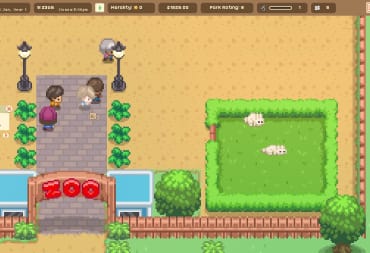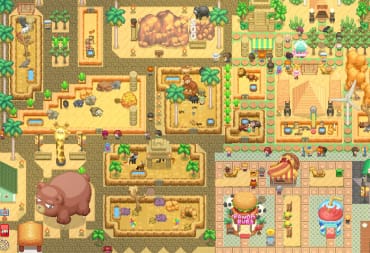As a management and building simulator, Let's Build A Zoo has many gameplay mechanics involved, which can make the indie title seem hectic when you're first starting out. Furthermore, when things start to go south, whether it be evil morality or piling debt, it can be a bit difficult to dig yourself out of the hole, so here are some helpful tips to keep in mind when starting a new zoo in Let's Build A Zoo.
You Cannot Have Both Positive and Negative Morality
The morality system starts immediately. This includes both ongoing effects like how well you feed your animals and pay your staff as well as choices that you a required to participate in, such as painting a goose to look like a peacock to attract more guests. As funny as this might sound, it inflicts negative morality and can quickly send your score into the negative, closing you off to any Research Hub upgrades that require good morality.
But don't worry too much -- even if you get off on the wrong foot or decide to go in the opposite direction, it's not difficult to dig yourself out of the hole early on, but it can be later. Moving from positive to negative is as easy as firing employees without severance and feeding your animals with low-quality food. However, if you've participated in black market sales, it'll weigh down on your positive score but will disappear after 30 days.
How to Get New Species in Let's Build A Zoo
Getting new species can happen in a couple of different ways. Click on the World Map in the top right-hand corner, and here you can view several zoos around the world that are willing to trade their animals for a specific species. Keep in mind that they will want a specific variant of the species, which can be done by discovering new variants via breeding in the Nursery.

The other method of getting new species is by rescuing animals from disasters like wildfires when prompted. These are considered critical decisions that you must participate in, and it'll award you positive morality, but overall it's an easy way of getting new animals like rhinos and donkeys. Keep in mind that they'll be delivered to you immediately and will probably all be of the same variation.
You Need to Trade With Other Zoos in Let's Build A Zoo
Trading your animals with other zoos can be done by clicking the World Map button on the top right corner, and it's essential to progress this part of the game. Even if you notice that the zoo would like to trade animals that you already have, this "quest" won't change to another animal until you've completed the trade.
Tip: Check on the Animal Shelter in Florida Regularly
You should check the World Map in general frequently, but the Animal Shelter will sell you mostly animals you've already come across. However, it can be a useful tool in getting new variants. You'll know a variant is new to your save file if it has "NEW" on the animal's icon, and buying them will help accelerate the breeding process, which uncovers even more new variants.
The Animals in Let's Build A Zoo Breed Like Rabbits (Including the Rabbits)
Be mindful about how many animals you have at any given time and keep track of how many are in a single enclosure. Some breeds multiple especially quickly, like the capybaras and geese. When you have dozens -- if not hundreds -- of animals, you won't notice every time an animal gives birth, and it can get out of control quickly, which can cause space issues or result in enough water for all the animals.

Luckily, the game doesn't punish you or serve negative morality for donating animals. Click on an animal and at the bottom of the window will be an option to donate next to the option to euthanize. Donating will give you good morality points while euthanizing will of course give you evil points. You can donate animals endlessly without consequence if you need to make space or keep food costs down.
Additionally, if you're following the good morality path, you can purchase a Release Hub at 40 good morality points through the Research Hub. This allows you to release any number of animals into the wild, which awards even more good morality points. And, unlike donating, you can select animals in bulk, making it a lot easier to get rid of excess animals when it gets out of control.
Don't Expand Too Quickly in Let's Build A Zoo
As tempting as it may be to house every new breed in its own enclosure, be careful about expanding your zoo too quickly. The bigger your park gets, the more employees you'll need to employ, and you'll need to build necessities like bathrooms and benches as well. As more enclosures are built, especially larger ones, animal keepers will have more to do per day and eventually will have too many enclosures on their daily rounds that more animal keepers will need to be hired. The same will happen with janitors as the zoo gets bigger.

Paying employees is easily your biggest weekly expense, especially if you want positive morality by paying your employees well. If you run out of money at the end of the week, you'll have to take out loans, which require weekly payments. Maximizing employee efficiency by not over-expanding is the best way to avoid taking out loans and keeping costs down.
Tip: You can house certain species together
When you get a new species or if you're trying to figure out how to save space, you can view if two or more species will live together fine while moving them. Keep an eye on their threat levels and the enclosure's space, though. But otherwise, lots of species can be held in the same enclosure without an issue. For example, capybaras and geese can live together as can bunnies and pigs, horses and rhinos, camels and porcupines, and so on.
Have a tip, or want to point out something we missed? Leave a Comment or e-mail us at tips@techraptor.net













